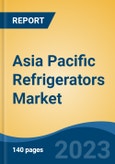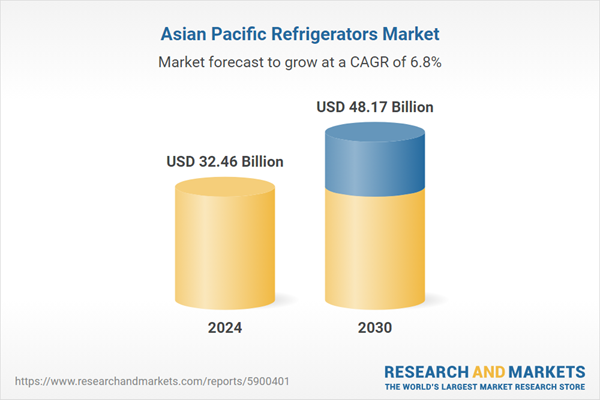Speak directly to the analyst to clarify any post sales queries you may have.
10% Free customizationThis report comes with 10% free customization, enabling you to add data that meets your specific business needs.
Key Market Drivers
Rapid Urbanization and Changing Lifestyles
One of the primary drivers of the refrigerators market in the Asia Pacific region is rapid urbanization coupled with changing lifestyles. As countries in the region continue to urbanize at an unprecedented rate, there is an increasing demand for modern appliances, including refrigerators. Urbanization leads to smaller living spaces and busier lifestyles, which in turn drive the need for efficient and space-saving refrigeration solutions. Furthermore, changing consumer preferences and the adoption of westernized diets have contributed to the rising demand for refrigerators. Consumers now seek appliances that can store a wide variety of foods, accommodate different dietary habits, and extend the shelf life of perishable goods. As a result, manufacturers in the region are innovating to provide refrigerators with versatile features such as adjustable shelving, temperature-controlled compartments, and energy-efficient technology.Key Market Challenges
Environmental Regulations and Sustainability Challenges
One of the foremost challenges in the Asia Pacific refrigerators market is the increasing emphasis on environmental regulations and sustainability. Governments across the region are tightening regulations to curb greenhouse gas emissions and reduce energy consumption. This has a direct impact on refrigerator manufacturers who must adhere to stricter energy efficiency standards. In recent years, the phase-out of ozone-depleting refrigerants like HCFCs and HFCs has pushed manufacturers to adopt alternative, more environmentally friendly refrigerants.The transition to these alternatives presents several challenges: Research and Development Costs: Developing and testing new refrigerants and technologies is expensive, and manufacturers must allocate significant resources to stay compliant. Supply Chain Disruption: Securing a consistent supply of alternative refrigerants can be challenging due to limited production capacities and potential geopolitical issues. Consumer Education: Educating consumers about the importance of purchasing eco-friendly refrigerators is crucial, but it can be a complex task, especially in emerging markets. Furthermore, the drive towards sustainability also involves reducing the environmental footprint of refrigerator manufacturing processes. Manufacturers must adopt greener production methods, such as reducing waste, improving energy efficiency during production, and recycling components.
Key Market Trends
Sustainability and Energy Efficiency
One of the foremost trends in the Asia Pacific refrigerators market is the growing emphasis on sustainability and energy efficiency. As consumers become more environmentally conscious and energy costs rise, manufacturers are increasingly focusing on creating refrigerators that reduce energy consumption. This shift has led to the development of energy-efficient models that adhere to international standards and regulations. Many countries in the Asia Pacific region have implemented strict energy efficiency standards for appliances, including refrigerators.In response, manufacturers have adopted innovative technologies such as inverter compressors, better insulation materials, and LED lighting to enhance efficiency. These developments not only reduce electricity bills for consumers but also contribute to lowering carbon emissions. Moreover, refrigerators with eco-friendly refrigerants like R600a and R290 are gaining popularity as they have lower global warming potentials compared to traditional refrigerants like R134a. This aligns with global efforts to combat climate change and reduce greenhouse gas emissions.
Key Market Players
- Midea Group Co Limited
- Panasonic Corporation
- Voltas Limited
- Samsung Corporation Limited
- Toshiba Corporation
- Hitachi Group
- Mitsubishi Electric Corporation
- LG Electronic
- Whirlpool Corporation
- Haier Group Corporation
Report Scope:
In this report, the Asia Pacific Refrigerators market has been segmented into the following categories, in addition to the industry trends which have also been detailed below:Asia Pacific Refrigerators Market, By Product Type:
- Top Freezer Refrigerator
- Bottom Freezer Refrigerator
- Side by Side Refrigerator
- French Door Refrigerator
Asia Pacific Refrigerators Market, By Distribution Channel:
- Online
- Offline
Asia Pacific Refrigerators Market, By Country:
- China
- Japan
- India
- South Korea
- Australia
- Indonesia
- Singapore
- Vietnam
- Malaysia
- Thailand
Competitive Landscape
Company Profiles: Detailed analysis of the major companies present in the Asia Pacific Refrigerators market.Available Customizations:
With the given market data, the publisher offers customizations according to a company's specific needs. The following customization options are available for the report.Company Information
- Detailed analysis and profiling of additional market players (up to five).
This product will be delivered within 1-3 business days.
Table of Contents
Companies Mentioned
- Midea Group Co Limited
- Panasonic Corporation
- Voltas Limited
- Samsung Corporation Limited
- Toshiba Corporation
- Hitachi Group
- Mitsubishi Electric Corporation
- LG Electronic
- Whirlpool Corporation
- Haier Group Corporation
Table Information
| Report Attribute | Details |
|---|---|
| No. of Pages | 132 |
| Published | February 2025 |
| Forecast Period | 2024 - 2030 |
| Estimated Market Value ( USD | $ 32.46 Billion |
| Forecasted Market Value ( USD | $ 48.17 Billion |
| Compound Annual Growth Rate | 6.8% |
| Regions Covered | Asia Pacific |
| No. of Companies Mentioned | 10 |









